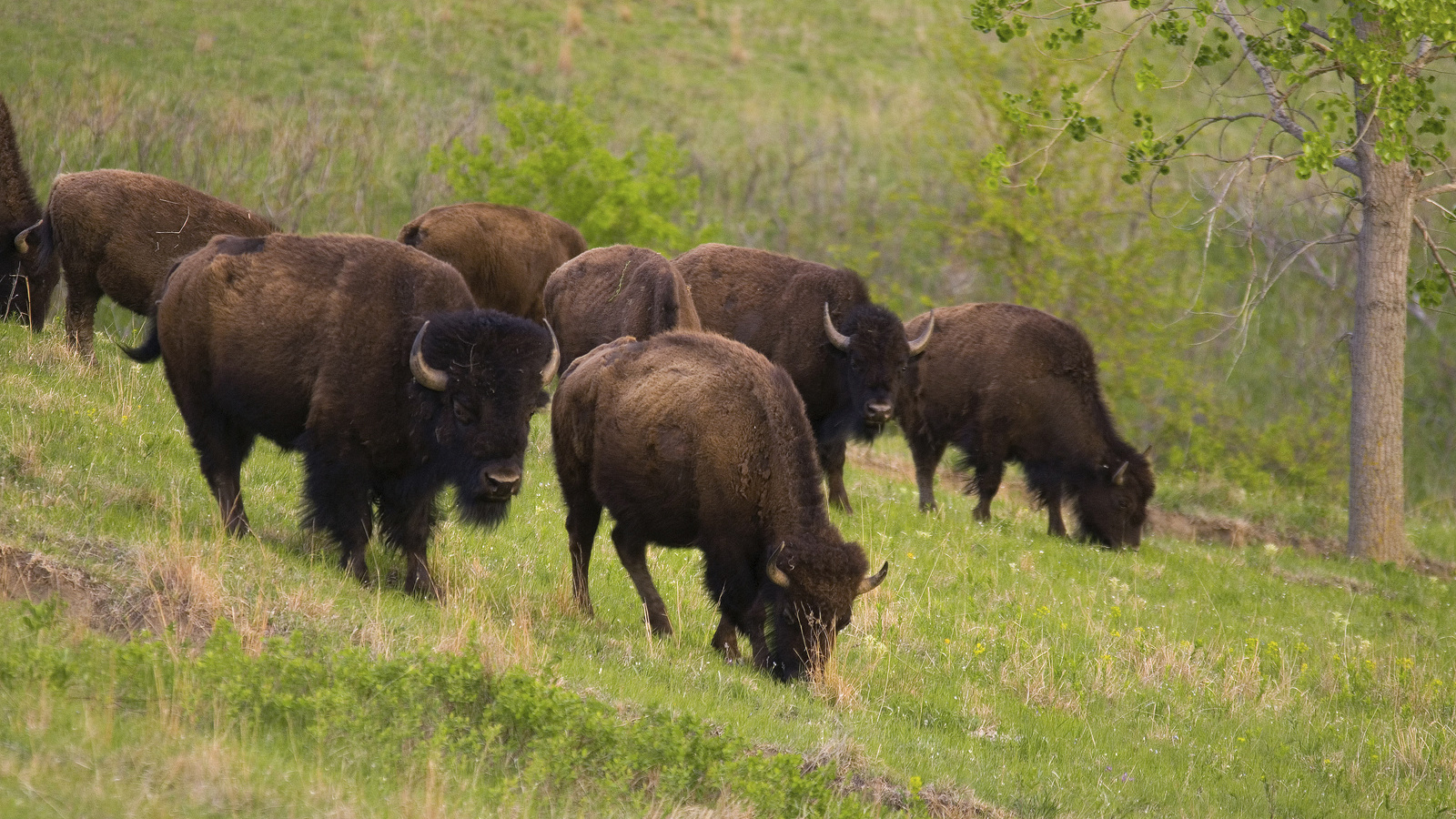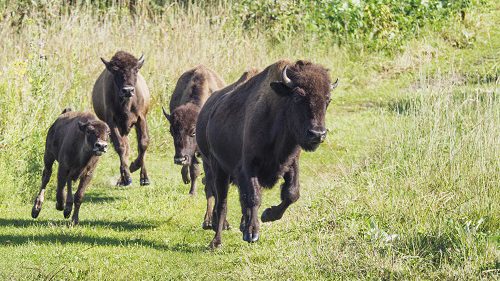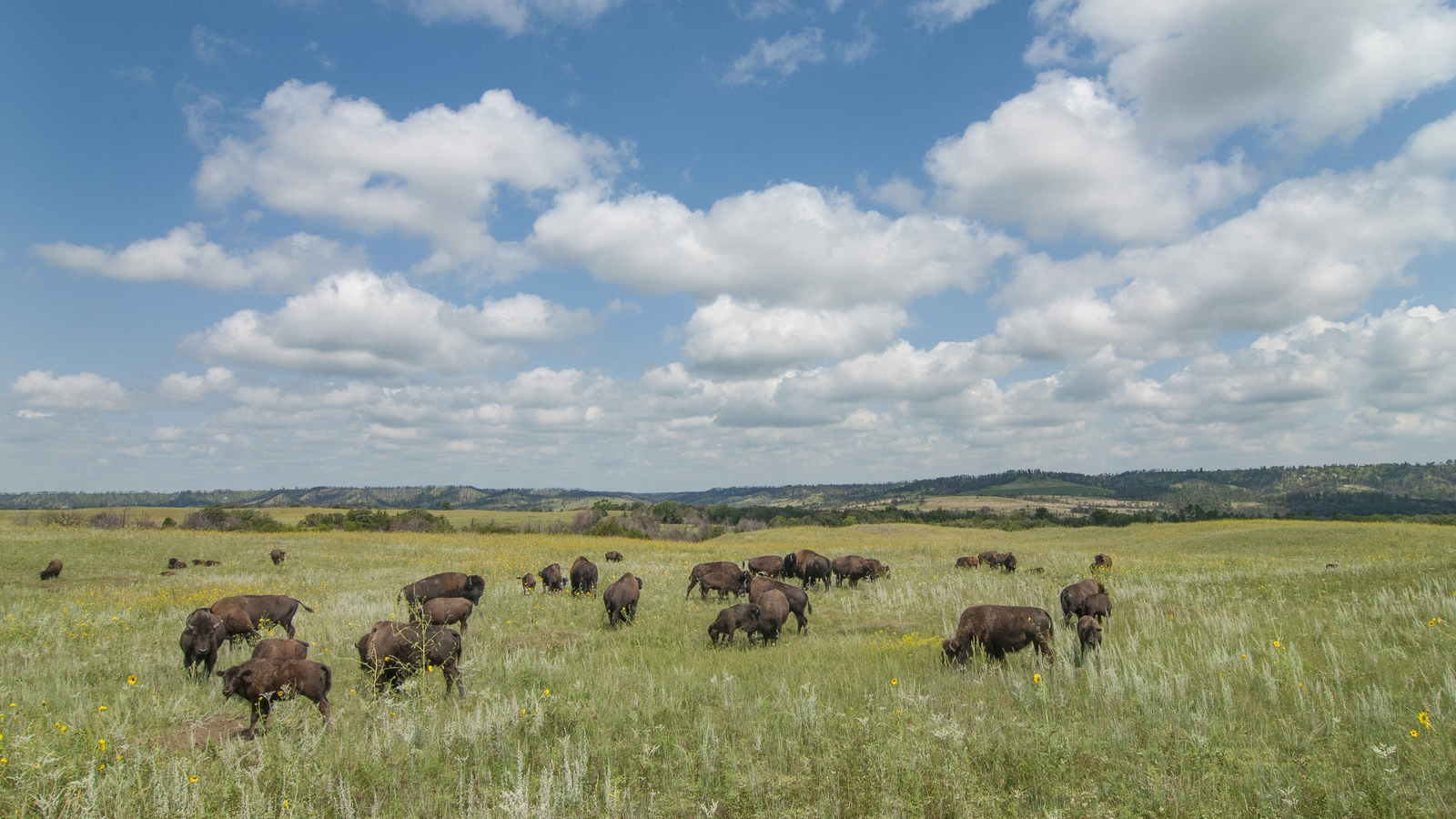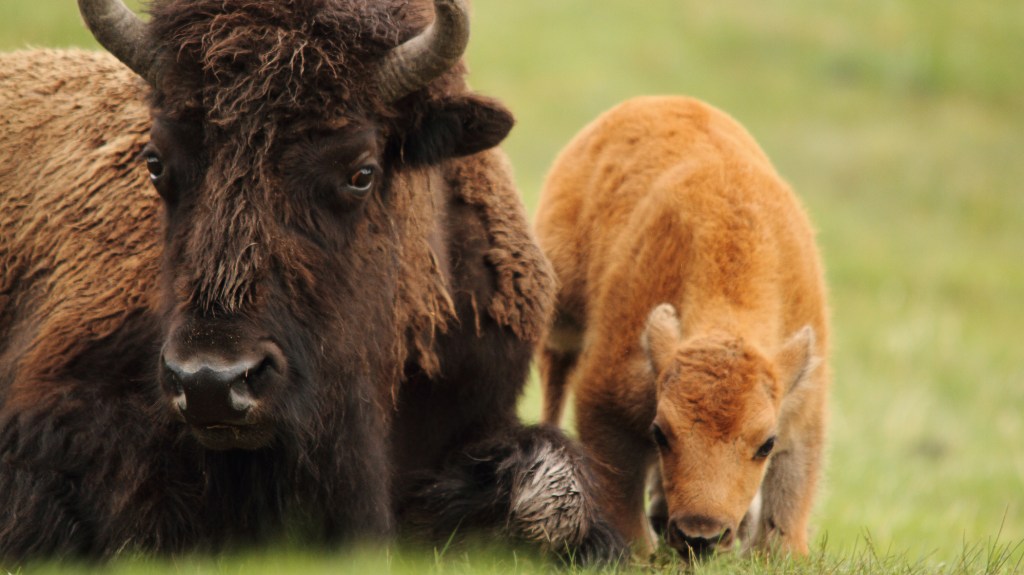The Nature Conservancy is continuing to expand its bison conservation program, and now the animals are moving east. This fall, the shaggy beasts will be reintroduced to Kankakee Sands, a Nature Conservancy preserve in northern Indiana.
The Nature Conservancy has an extensive bison conservation program, with herds now found on 13 preserves. Kankakee Sands will be the easternmost Conservancy preserve where the animals roam.
Historically, bison roamed the Indiana prairie, although likely in small, residential herds in contrast to the huge, migratory bison of the Great Plains. Explorers and travelers reported seeing bison in the state in the 1600s and 1700s. In 1824, a traveler encountered a lone bison near the preserve’s location and shot it. The animals were extirpated from the state by 1830.
Native habitat hasn’t fared much better in the state: More than 99 percent of Indiana’s prairies have been lost to agriculture, development and lack of healthy fire.
Since 1996, the Conservancy and partners have been working to restore a significant slice of prairie at Kankakee Sands. Nearly 6,500 acres have been planted with 600 native plants. Like its own “field of dreams,” once those plants were in the soil, the native wildlife followed.
But planting prairie plants is just one part of restoration. This habitat evolved with grazers and fire. Conservancy stewards manage some of the preserve with patch-burn grazing, where cows follow burned areas, mimicking natural prairie processes.
Now bison will be added to the management plan.

A land manager, of course, cannot just order some bison and set them free. Preparing for a bison release means a lot of research and a lot of hands-on training. It means a land manager must suddenly become an animal manager. It means paying attention to details, planning for fences and round-ups and visitors.
Nobody knows this better than Tony Capizzo, Kankakee Sands steward. Capizzo is used to controlling invasive weeds and monitoring native vegetation. “I’ve learned so much about livestock and large animals in three short years,” he says. “Fortunately, the Conservancy has so much experience in managing bison for conservation. I don’t have to reinvent the wheel here. There are so many Conservancy staff with so much experience working with these animals.”

A Bison Road Trip
To learn about bison management, Capizzo visited and worked on other preserves to see firsthand how other managers worked with bison.
Bison present unique challenges on a preserve: They are wild animals, and managers want them to behave naturally to maximize their benefits to the prairie ecosystem. But a preserve is an enclosed environment. In most areas, bison must also be vaccinated and monitored with annual round-ups.
Capizzo participated in round-ups at the Conservancy’s Dunn Ranch in Missouri and Broken Kettle Preserve in Iowa.
“It was fascinating to see how smart bison are, to see how they move, to see how different they are from cattle,” he says. “Round-ups can be really stressful for bison. Being a competent handler can make a huge difference for them.”

At Kankakee, Capizzo only plans to handle the calves. They will be fitted with microchips, and their tail hairs will be pulled to get genetic samples.
His discussions with other managers also helped him think about how bison can best manage the prairie. The herd will roam over 1,000 acres at Kankakee. “The reason we’re bringing bison to this site is as a land management tool,” he says. “We want to manage for a diversity of grassland species. Measured disturbance makes a prairie more diverse.”
The planted prairie at Kankakee has already attracted many wildlife species. Dicksissels, a native grassland bird, have prospered in the tallgrass. With more habitat diversity created by the grazing and wallowing of bison, other birds such as upland sandpipers and northern harriers may similarly thrive.
“One of our goals with our management is to put grazing impacts on areas of the preserve to increase habitat diversity and increase bird diversity,” says Capizzo.
The Conservancy and partners have conducted extensive baseline monitoring to see what species are using the prairie. University experts conducted surveys of birds, mammals, moths, soil creatures, plants and more.

Bison Spotting
Returning large mammals to the prairie means addressing a long list of logistical and legal issues – a process that takes years. The Conservancy has completed that process. Now it’s time to bring the animals back.
There’s still one question for many Kankakee Sands supporters: Can we actually see the bison?
The viewing experience, too, has been part of the planning. “Visitors will be able to see the bison easily and safely,” says Capizzo.
A viewing area will be established off a highway that runs by the preserve. Another area with slight elevation will provide a natural “platform” where wildlife viewers should be able to see the bison grazing on the prairie.
“It’s going to be really cool to watch what happens next,” says Capizzo. “We will be able to see the impacts these animals have on the prairie habitat. They are really interesting animals to watch, but it may be even more interesting to see how they influence Kankakee Sands.”




Have the bison started calving yet
Hi Dawn, Thank you for the question! The Indiana bison are expected to start calving in April.
I hope the nature conservancy continues to educate people about the importance of returning the bison to the grasslands and the animals contribution and adaptation to those grassland environments. If natures version of capitalism selects traits for adaptation and survival it offers alternative views for land management when compared to management practices that involve the care and propagation of domesticated plants and animals. It takes more time, energy and resources with human interaction to manage environments for domesticated plants and animals. Relying upon the present human host for survival would appear to last only as long as the human host stays around and contributes. The archaeological data suggests that the human support for domesticated ecologies for a number of reasons tends not be long lived.
We like to go out & view Thurs. Nov. 17th. Is it possible and where are the best parking places?
And will the BLM be allowed to harass and round up any bison including newborn calves and run them to exhaustion and death like is being done in Yellowstone????? I have been a follower of Bison conservation for years and so far NOTHING stops the government and it’s hunters from doing harm to OUR native wildlfie!!!! Barbara Smolinski
Stopped by yesterday on our way home from Chicago. We didn’t see any while we were at the viewing area but as we were driving slowly down the gravel road to the county road a group of about a dozen bison walked out of the tall growth and began drinking out of a water filled depression right next to the fence. We were able to get out of the car and observe them, they were only about 50 feet away, before they went back into the high growth. Started back towards the county road and another group of 8-10 walked out of the growth and walked along the fence to the same water hole. Got great pics, they were on the north side of the gravel road leading to the viewing area.
Thanks for your comment. We’re going out Nov. 17th. Any other tips?
We need to protect all our wildlife, as opposed to decimating them.
Excellent! Truly a noble effort.
This is great news. Anything we can do to help restore America to what it once was with regards to flora and fauna will only benefit everyone in the long run. With ever-increasing human populations, it’s vitally important that we make sure there’s enough room for wildlife populations as well. Thanks for the report!
HELP THE BISON
This is great news! Is there a target date for completion and opening for the public to view?